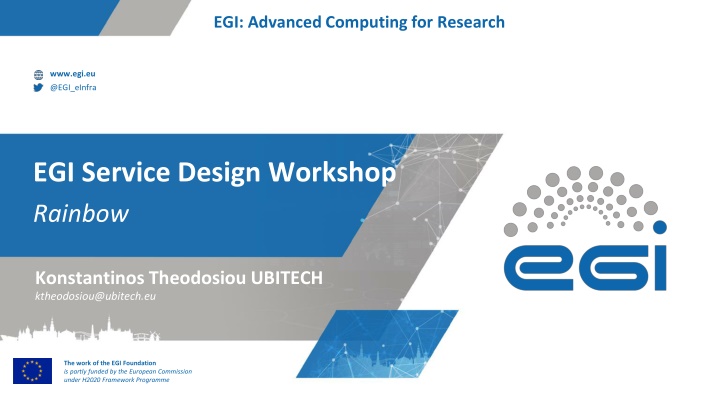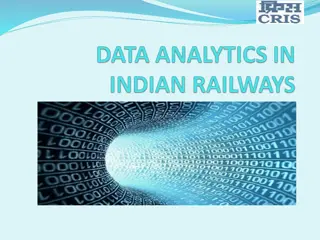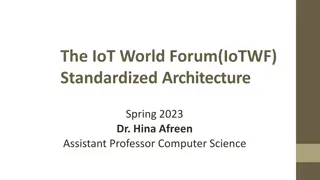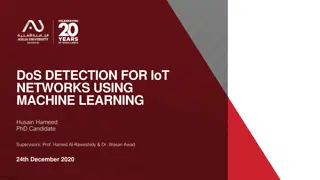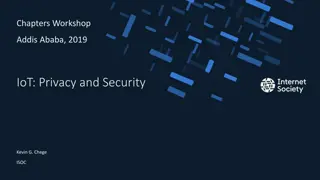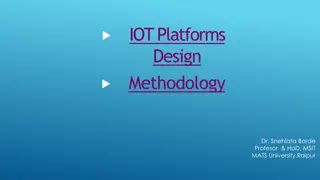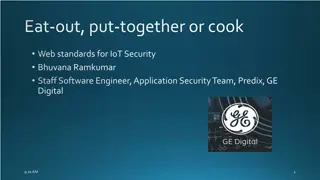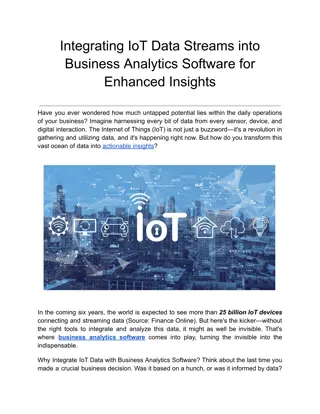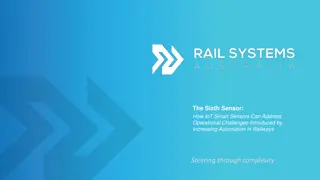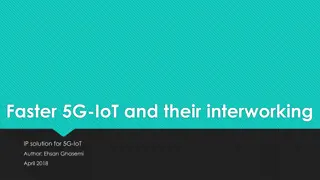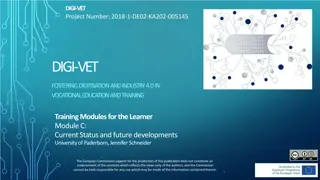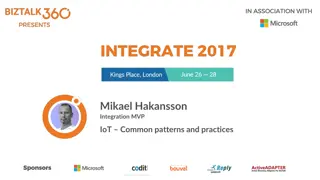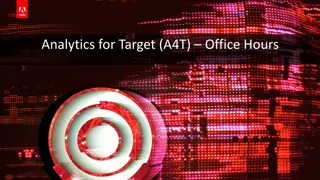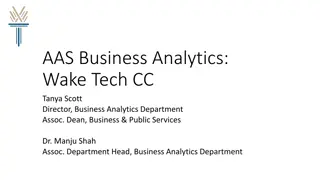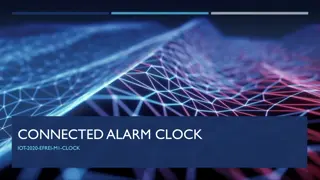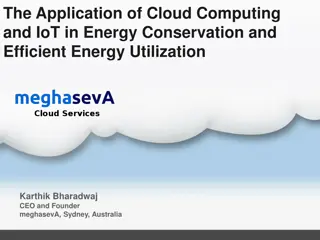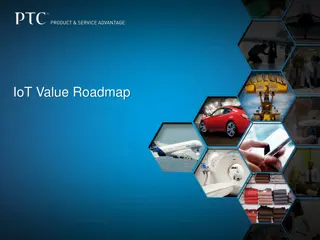Introducing Rainbow Platform: Innovative IoT Orchestration and Analytics
Explore the Rainbow platform, funded under Horizon2020, offering intelligent middleware tools for IoT orchestration, data collection, and decentralized analytics. It provides secure and efficient fog computing services for various applications, benefitting cloud platforms and data management engines. Discover its use cases for accelerating ICT product development and empowering innovation in fog computing.
Download Presentation

Please find below an Image/Link to download the presentation.
The content on the website is provided AS IS for your information and personal use only. It may not be sold, licensed, or shared on other websites without obtaining consent from the author.If you encounter any issues during the download, it is possible that the publisher has removed the file from their server.
You are allowed to download the files provided on this website for personal or commercial use, subject to the condition that they are used lawfully. All files are the property of their respective owners.
The content on the website is provided AS IS for your information and personal use only. It may not be sold, licensed, or shared on other websites without obtaining consent from the author.
E N D
Presentation Transcript
EGI: Advanced Computing for Research www.egi.eu @EGI_eInfra EGI Service Design Workshop Rainbow Konstantinos Theodosiou UBITECH ktheodosiou@ubitech.eu The work of the EGI Foundation is partly funded by the European Commission under H2020 Framework Programme
Introduce the service: Rainbow 1/3 What we are offering? Innovative mechanisms and intelligent middleware tools for IoT orchestration, data collection & decentralized analytics Secure and efficient data storage and processing at the fog & edge layer A fog platform that facilitates the design, development and orchestration of scalable, heterogeneous, secure and privacy-preserving IoT services and cross-cloud applications Provide significant benefits for popular cloud platforms, fog middleware, and distributed data management engines, and extend the open-source ecosystem by pushing intelligence to the network edge while also ensuring security and privacy. The Rainbow platform is developed under the Horizon2020 program, and is being developed from different European companies and universities www.egi.eu @EGI_eInfra 2 3/22/19
Introduce the service: Rainbow 2/3 What makes the use case interesting Accelerate production of successful ICT products and services for the fog paradigm Lower the entry point of researchers and DevOps engineers to reuse and build on RAINBOW s results Empower innovation by making fog services more efficient and effective Benefit end users and the public sector due to the adoption of decentralized, edge and fog computing applications Value proposition: Users interested in solving a problem in real time and outperforming the competition Developers or SMEs looking to reach new market segments using SotA Fog tech Currently the maturity level of the platform is on TRL 3 and we will be on TRL 5 by June 2021 www.egi.eu @EGI_eInfra 3 3/22/19
Introduce the service: Rainbow 3/3 It is planned to be fully available around 2022, but beta version availability is planned. The alpha and beta versions will be used by the Rainbow's 3 pilots. Rainbow can be used in cases where: real-time responsiveness high availability data freshness efficient data protection and management energy-efficiency Who in the EGI community should be interested in it? End users that need to use a Trusted Fog platform Resource providers that want to provide them in third party users www.egi.eu @EGI_eInfra 4 3/22/19
EGI integration plans We may integrate with the following EGI services AAI, Medium priority Compute resources, High priority Data mgmt. System, Medium priorityiority) www.egi.eu @EGI_eInfra 5 3/22/19
SDTP section: Business Case Design Demand assessment Best Case: Being widely used and correlated with the usages of Kubernetes Average Case: Provide it to customers and further future proofing it with their demands Worst Case: Used only internally or use part of the platform for other implementantions Assumptions about market uptake Best Case: High community acceptance, UI friendliness, No alternative the first years Average Case: Addopted by different users and more features are requested by them Worst Case: High quality and readiness of the platform, but not wide market share Expected organisational impact on the service provider due to demand Best Case: No impact Average Case: Hire new personnel, Expand the Edge/Fog/Cloud resources Worst Case: Signing of new contracts between the partners www.egi.eu @EGI_eInfra 6 3/22/19
SDTP section: Business Case Design Expected Cost and Revenue has not currently been defined due to the fact that is under H2020 programm Potentials risks: Best Case: Limitation on the human resources and not be able to scale that rapidly due to huge demand Average Case: Core technologies must need to be changed slightly, other competitors Worst Case: Consortium level problems No suppliers will be needed, as about the evaluation, the 3 selected use cases will define at the start the features and potentials of the platform. Limiting Factors may be the size of the market as also the competition by bigger companies Our Access-Policy will be most likely market-driven and will depend on the customers needs and offerings www.egi.eu @EGI_eInfra 7 3/22/19
Open issues Our plan is to bring the platform in TRL 7 level and tested as thoroughly as possible in real world scenarios One of our main issues that we currentlyhave is to select the most proper Kubernetes capable edge solution for our orchestration mechanism www.egi.eu @EGI_eInfra 8 3/22/19
EGI: Advanced Computing for Research www.egi.eu @EGI_eInfra Thank you Konstantinos Theodosiou UBITECH ktheodosiou@ubitech.eu The work of the EGI Foundation is partly funded by the European Commission under H2020 Framework Programme
